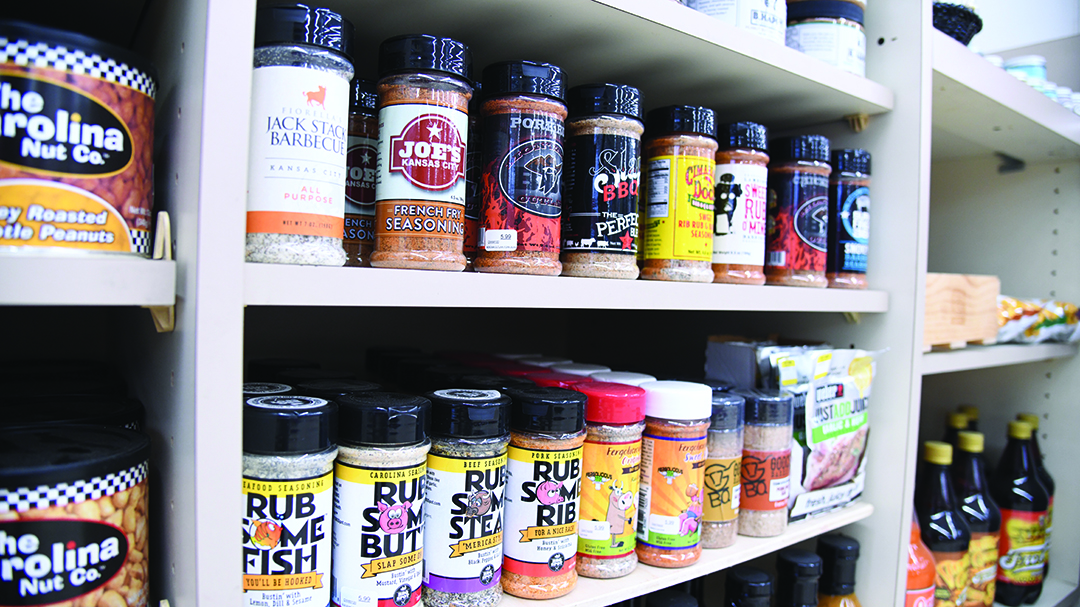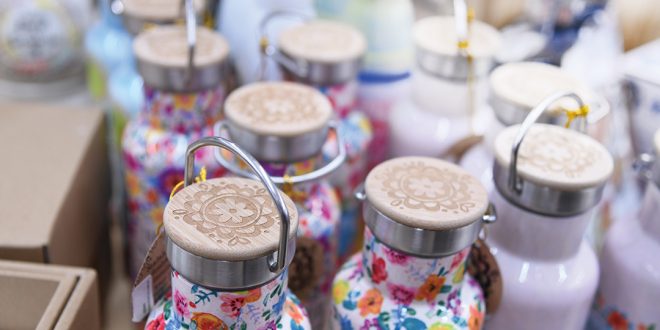Last year, large retailers like Amazon, Home Depot, Lowe’s, Target and Kohl’s reported steady sales in housewares, with many lines capturing 10 to 20 percent or more of overall sales. As the category grows, independent home improvement retailers can boost sales and expand housewares inventory the same way large retailers do: by monitoring shifting lifestyle trends which often pinpoint upcoming housewares styles.
Learn from retailers in the Midwest and on the East Coast who operate expansive housewares departments. Their most valuable resource when deciding how to differentiate their department is understanding their customers.
Rising Reusables
“Housewares is a tough business because it’s based on what’s trending,” says Craig Johnson, housewares manager at TAGS Hardware. The store, located in Cambridge, Massachusetts, has a thriving 25,000-square-foot housewares department within a 55,000-square-foot salesfloor. Johnson and the rest of the staff stay on top of new trends to boost sales.
When it comes to what’s current, Johnson says Tags’ customers are concerned about the impact disposable items have on the planet.
“They really want to help the environment,” he says. “They’re geared toward eco-friendly items that eliminate the use of plastics.”
Since Starbucks pledged to eliminate plastic straws by 2020, reusable straws have become popular. Tags stocks a line of durable, reusable glass straws that are made in the U.S. and come in a variety of colors and designs.
Silicone is another common alternative to plastic in the housewares category. It is used to make a variety of kitchenware items, including baking pans, ice trays, lids and utensils. It is stain-resistant, safe for appliances, flexible for easy storage and often comes in a variety of colors.
Johnson says some of his store’s most popular items include reusable silicone bags that come in several sizes.
Other popular items at Tags include flexible fabric squares coated with organic jojoba oil, beeswax and tree resin that serve as an alternative to plastic storage bags and cling wrap. They are washable, reusable and also compostable, making them a hit with customers.
Exploring products from local vendors can bring one-of-a-kind gift options to your inventory.
Akard True Value Hardware owner Leigh Ann Akard, says she stays tuned in to what her customers are looking for in Zionsville, Indiana, which means stocking absorbent cloths as an alternative to paper towels.
“We also sell travel wine glasses and tumblers made with our own designs,” says Akard. “They are very popular, especially with moms from a local wine club. They all came in to get one.”
Identify This Trend
Host a focus group with customers to find out how they are making greener choices in their homes and learn how you can help support those habits. Be sure to offer a gift to participants, such as reusable straws or travel mugs.
Food Fads
From the latest diets and delivery services to popular specialty beverages, trends in home cooking often drive demand for housewares items. Mail-order meal kits are becoming increasingly popular as U.S. consumers prioritize saving time and eating healthy. You can help your customers accomplish both when you dig into food prep products.
“We recently changed our impulse area by the register,” says Akard. “We used to have seasonal items like gift wrap supplies at Christmas or plant food in the summer, but we added a taller case and stocked it with spices, seasonings and other food-related items.”

In the new impulse area, Akard added nuts in a variety of flavors, including spicy and candied options. The display also features barbecue sauces and rubs and unique local fare. Exploring products from local vendors can also bring one-of-a-kind gift options to your inventory. Akard stocks locally made snickerdoodle-flavor peanut butter she says is a crowd-pleaser.
“Those products are impulse buys because someone doesn’t run out to get spices or healthy snacks and end up at the hardware store,” says Akard. “But the nuts especially have done well for us because people are trying to eat healthier.”
New hobbies are also impacting the housewares category, especially when it comes to perfecting beloved beverages.
According to a 2017 study by the American Homebrewers Association, 1.1 million Americans brew beer, accounting for 1 percent of total beer produced in the U.S. The data reveals brewing hobbyists are spread almost equally across the country, making brew kits a potentially powerful product line to explore for retailers everywhere.
A popular addition in homebrewing is kombucha, a fermented tea drink. Commercially, the bottled drink product has steeped sales of $534 million, says Kombucha Brewers International. The first kombucha homebrewing kit recently hit the market, opening another opportunity for retailers to grow sales.
Nearly half of Americans over the age of 18 drink coffee daily, and pursuing the perfect cup of coffee has driven housewares manufacturers to create single-serve appliances and unique brewing supplies.
In 2019, dishwasher-safe, 1-cup pour-over coffee brew cones and ceramic mug sets in a variety of colors and styles hit the market for customers looking to brew their own perfect cup at home.
Driven by the popularity of coffee, single-serve appliances have also expanded into the cocktail market. Home cocktail makers produce mixed drinks, including mocktails, on demand, similar to single-serve coffeemakers.
Identify This Trend
Keep your homebrewers satiated by keeping a fresh batch of kombucha or a new single-serve coffeemaker ready to test in the store. Offer free samples of brew mixes with every purchase of a kit or accessory to help customers get the most value out of their purchase.
Portable Appliances
When it comes to small appliances, consumers are going much further than single-serve beverages.
Many consumers are seeking commercial-grade appliances for their kitchens. A Millennial Homeownership report conducted by the Urban Institute finds significantly fewer millennials (32 percent) own homes than members of Generation X or baby boomers.

With such a large segment of consumers renting or living at home longer, the housewares category has seen an impact. Without the ability or space to upgrade or expand kitchen appliances, millennials are driving an explosion in the small and countertop appliance market, including specialty appliances like pizza ovens, countertop ovens, toaster ovens, air fryers, sous-vide cookers and slow cookers.
Many of the products are also smart devices, which are gaining in popularity. Forrester Research says the number of homes with smart devices will grow from 12.2 million in 2018 to 26.7 million in 2022, driven largely by consumers’ desire for convenience and speed.
One example of a smart appliance is a WiFi-enabled instant cooker. These electric pressure cookers significantly speed up cooking time and can be controlled through an app or by a voice-activated digital assistant. They can be used to make a variety of foods, from cakes and yogurt to slow cooker-style ribs.
Identify This Trend
Click here to get the data on small appliance sales trends at big-box stores over the last two years.
The Inside Track
By keeping a close eye on emerging lifestyle trends across the country and in their communities, retailers can gain a leg up and discover which housewares products will soon become must-have items for their customers.
 Hardware Retailing The Industry's Source for Insights and Information
Hardware Retailing The Industry's Source for Insights and Information








